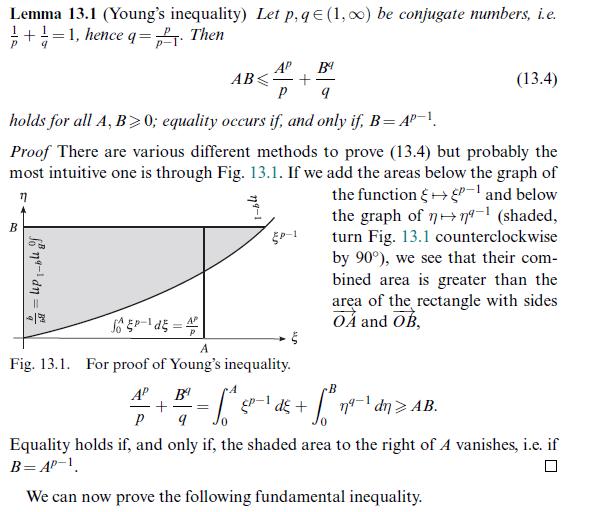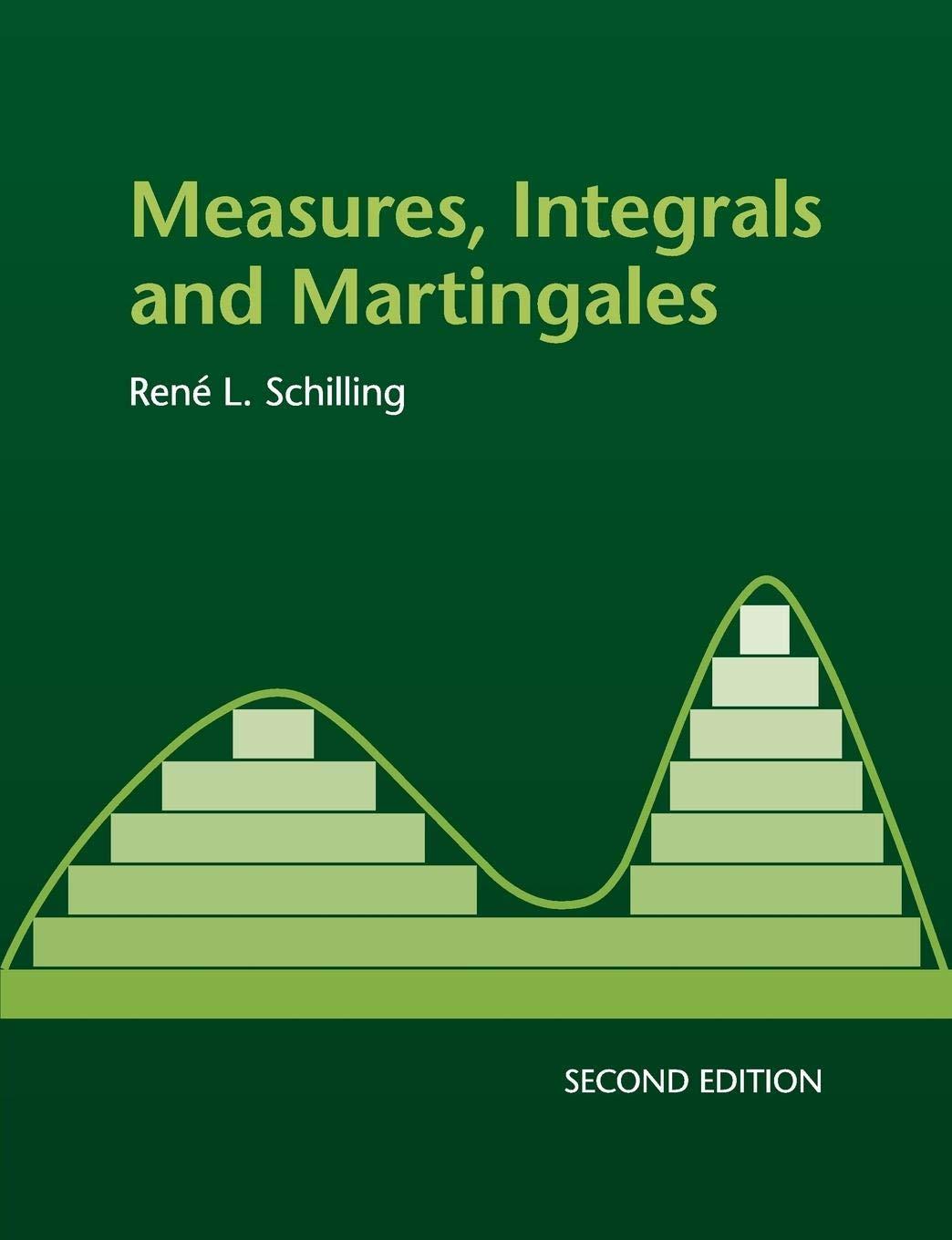Young functions. Let (phi:[0, infty) ightarrow[0, infty)) be a strictly increasing continuous function such that (phi(0)=0) and
Question:
Young functions. Let \(\phi:[0, \infty) ightarrow[0, \infty)\) be a strictly increasing continuous function such that \(\phi(0)=0\) and \(\lim _{\xi ightarrow \infty} \phi(\xi)=\infty\). Denote by \(\psi(\eta):=\phi^{-1}(\eta)\) the inverse function. The functions
\[\Phi(A):=\int_{[0, A)} \phi(\xi) \lambda^{1}(d \xi) \quad \text { and } \quad \Psi(B):=\int_{[0, B)} \psi(\eta) \lambda^{1}(d \eta)\]
are called conjugate Young functions. Adapt the proof of Lemma 13.1 to show the following general Young inequality:
\[A B \leqslant \Phi(A)+\Psi(B) \quad \forall A, B \geqslant 0 .\]
[ interpret \(\Phi(A)\) and \(\Psi(B)\) as areas below the graph of \(\phi(\xi)\) resp. \(\psi(\eta)\).]
Data from lemma 13.1

Fantastic news! We've Found the answer you've been seeking!
Step by Step Answer:
Related Book For 

Question Posted:





